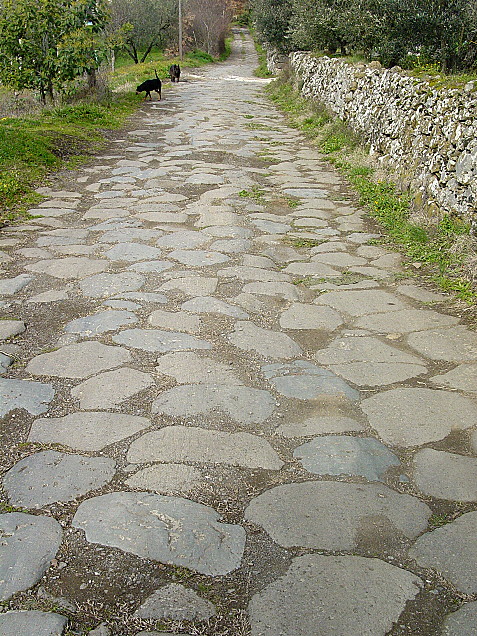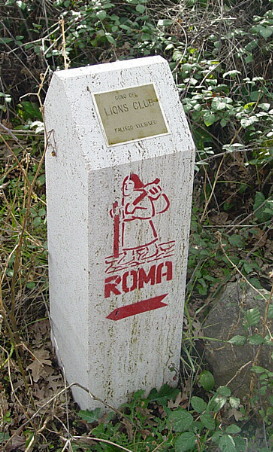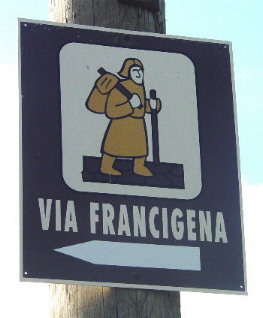To Montefiascone - Jan 30 |
Narrow medieval streets! | |||
|
We eat breakfast this morning in the same surreal cube of a room as yesterday. It is the normal pilgrim breakfast room, 25 x 25 x 25 feet (6 x 6 x 6 meters) with stark white walls and ceiling and a dark marble floor. A few religious posters hang on the walls. One window shares a wall with an automatic coffee vending machine, a small table, a refrigerator, and a door to somewhere. The hall door stands in the middle of the adjacent wall. We sit in the middle of the room on a 3 x 5 foot (1 x 1.5 meter) table for four. The cold bleeds the heat from my arms until I finish my first cup of coffee from the machine operated by 50-cent pieces in a box on the table beside it. But the fresh rolls are good and the butter not frozen. We eat our fill and feel a bit like we are sitting in some old castle room--I guess we are really--this is a huge old building. The sisters line up stair-step like again as we leave and smile a wonderful good-bye. One beats the elevator to the ground floor and sees us off with a joyful wave. Thanks, Sisters, thanks for so much love and your wonderful welcome. 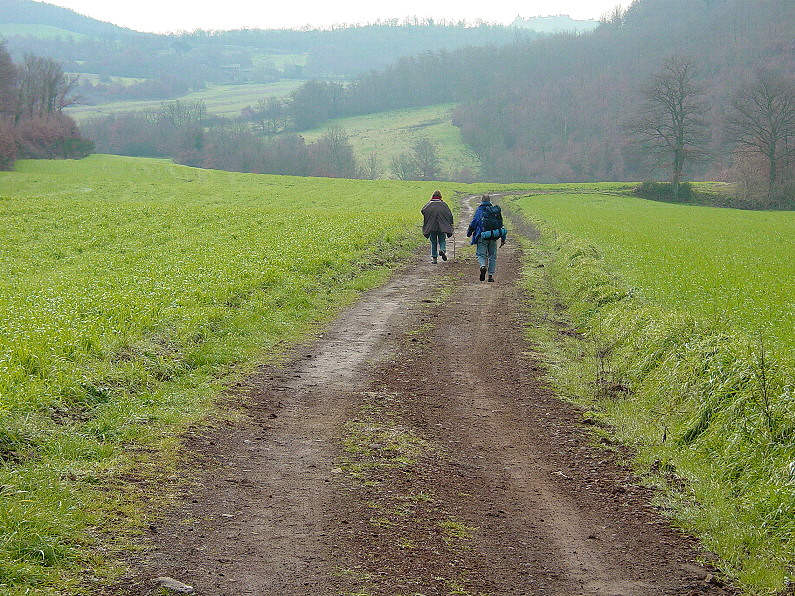 One of many of today's farm paths. Birds are singing everywhere this morning. It is at least 50 F. (10 C.). Flowers continue to line our pathway, among them new crocuses. It is only the end of January, isn't it? We walk along farm paths for quite a while till we have to turn off onto a narrow footpath for the first time in days. We make our way down into the valley and stretch across a creek on stones.
On the other side we soon find the path of the old Via Cassia. This actual ancient surface leads us toward Rome. An information board tells us that the original Via Cassia was a four-lane highway here. Two center lanes well paved with large flat stones were for chariots and wheeled commerce and two flanking lanes with smaller top stones carried walking traffic and horses. The base was dug out to the bedrock or solid ground and filled first with larger rock then with gravel, sand, and lime before being covered with the top pavement stones. Much still remains quite level and in places cars still drive on it, 2000 years after it was built. We walk it for many kilometers in the next several days. On the way into Montefiascone we pass the 99-kilometer-to-Rome marker on the road. We are getting there. In town we enter the Medieval part of town and walk up and up to the top of the mountain it sits on. We are looking for the Benedictine monastery but find nothing but a marvelous view over the lake to the north and west and the hills to the south. What a lookout. In time we ask directions from a series of people as we make our way back down into the town and finally find the monastery, our stopping place for tonight. The bartender in a popular bar directs us to a good restaurant for supper. As usual we are too early and have to walk around for almost an hour before they open at 7:30. But it is worth the wait. The food was excellent and the place was full of customers by the time we left at nine. 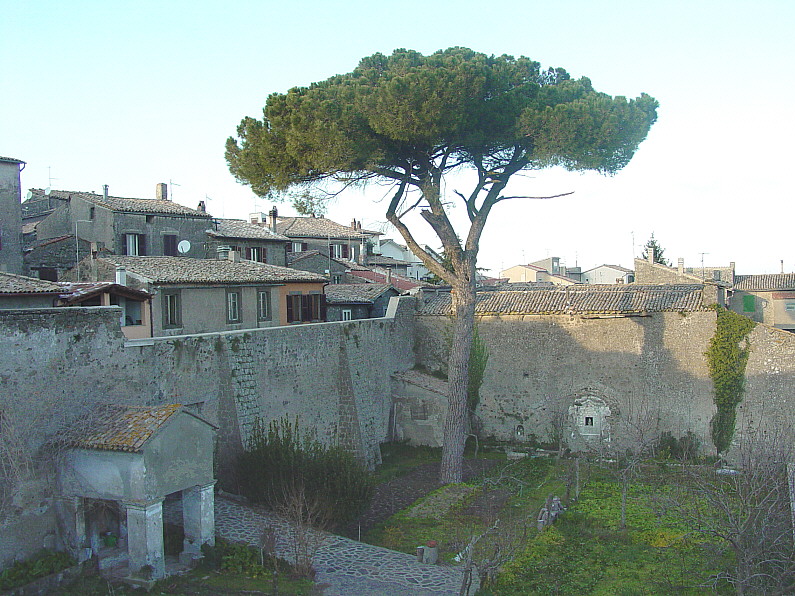 The monastery garden outside our bedroom window. 

 Bolsena 28 Jan Contents Viterbo 31 Jan Copyright © 2007-12 Mike Metras, www.PilgrimageCreations.com | ||||
